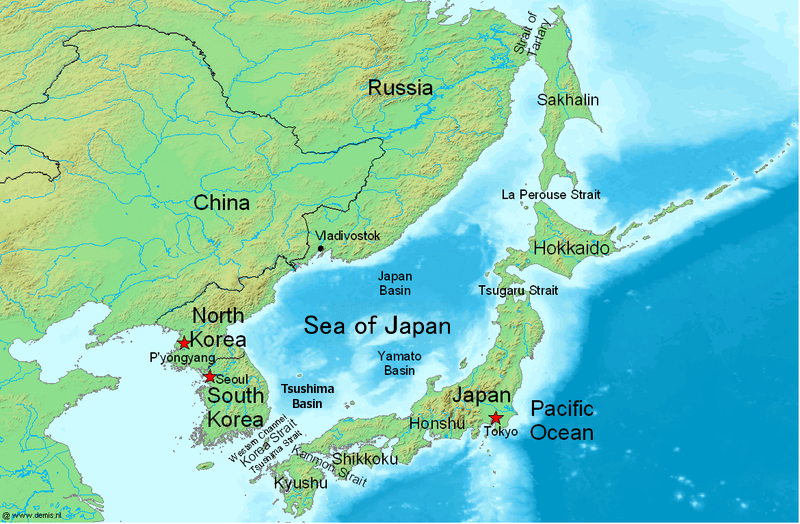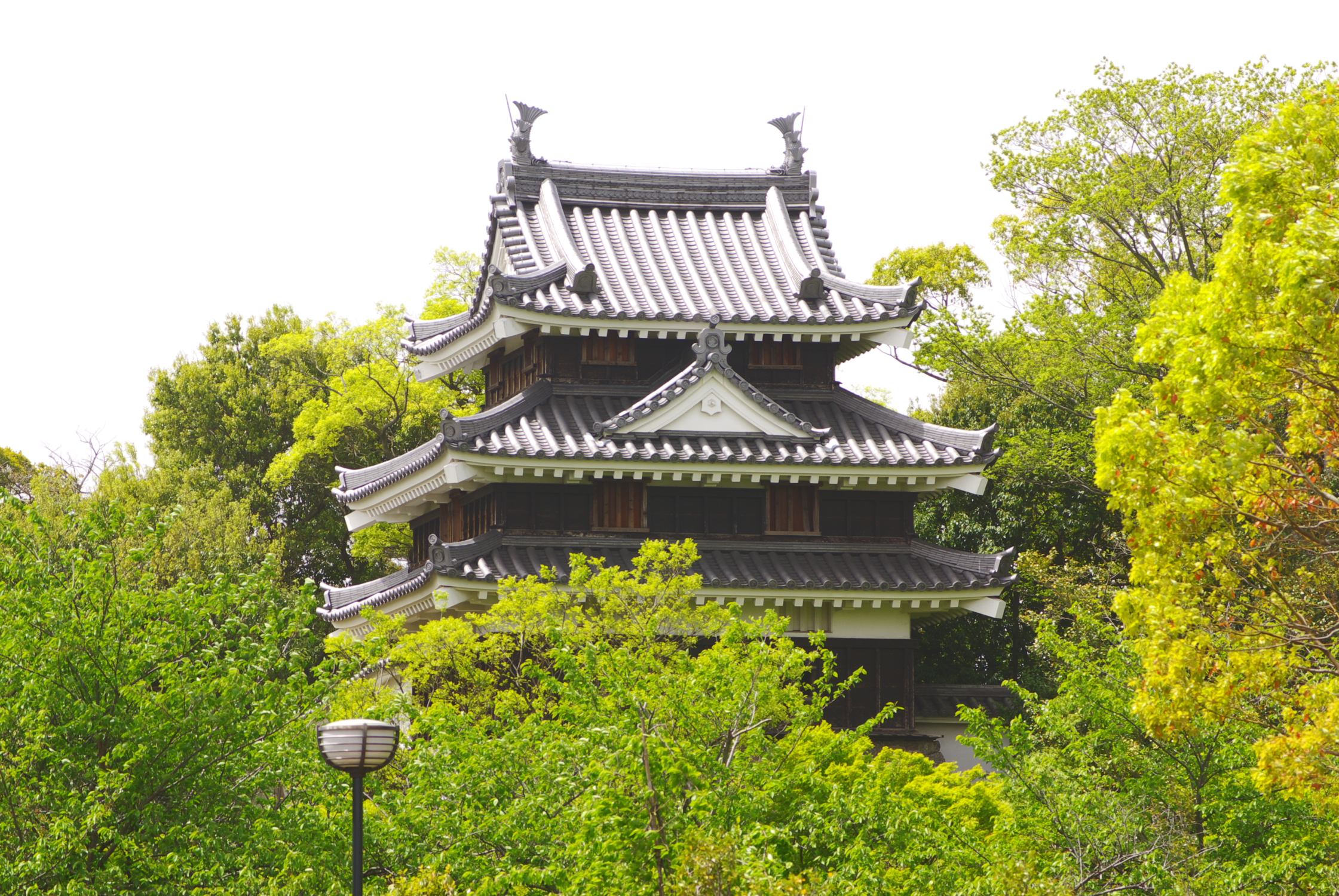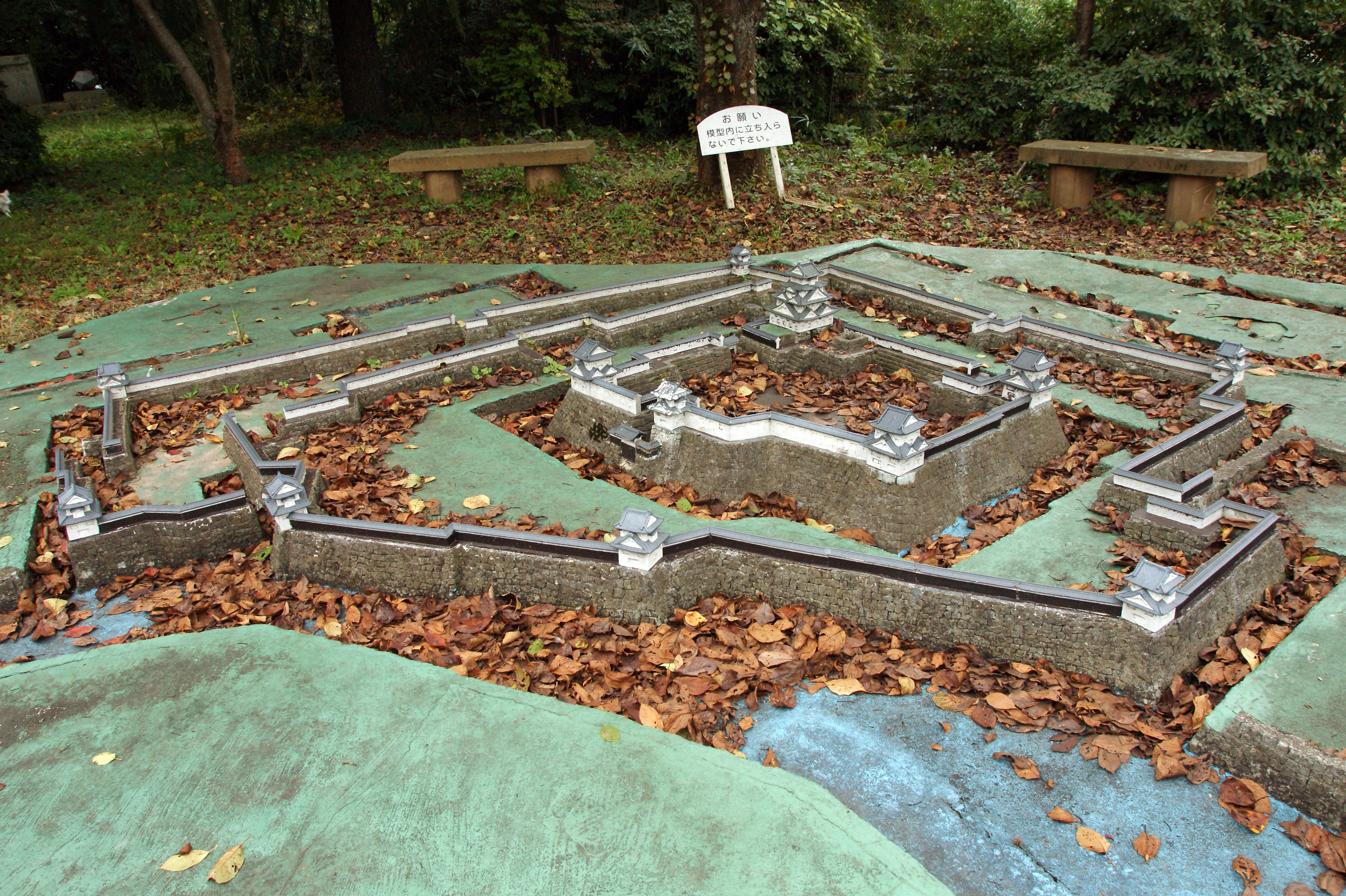|
Awara, Fukui
is a city located in Fukui Prefecture, Japan. , the city had an estimated population of 27,107 in 10,140 households and the population density of 232 persons per km2. The total area of the city was . It is one of the few Hiragana cities in Japan. Awara is a city famous for its onsen resorts and natural hotwater springs. Geography Awara is located in far northern Fukui Prefecture, bordered by Ishikawa Prefecture to the north and the Sea of Japan to the northeast, The city of Sakai surrounds the city to the east, south and west. Neighbouring municipalities *Fukui Prefecture ** Sakai * Ishikawa Prefecture ** Kaga Climate Awara has a Humid climate (Köppen ''Cfa'') characterized by warm, wet summers and cold winters with heavy snowfall. The average annual temperature in Awara is 14.2 °C. The average annual rainfall is 2481 mm with September as the wettest month. The temperatures are highest on average in August, at around 26.8 °C, and lowest in January, at ... [...More Info...] [...Related Items...] OR: [Wikipedia] [Google] [Baidu] |
Cities Of Japan
A is a local Public administration, administrative unit in Japan. Cities are ranked on the same level as and , with the difference that they are not a component of . Like other contemporary administrative units, they are defined by the Local Autonomy Law of 1947. City status Article 8 of the Local Autonomy Law sets the following conditions for a municipality to be designated as a city: *Population must generally be 50,000 or greater (原則として人口5万人以上) *At least 60% of households must be established in a central urban area (中心市街地の戸数が全戸数の6割以上) *At least 60% of households must be employed in commerce, industry or other urban occupations (商工業等の都市的業態に従事する世帯人口が全人口の6割以上) *Any other conditions set by prefectural ordinance must be satisfied (他に当該都道府県の条例で定める要件を満たしていること) The designation is approved by the prefectural governor and t ... [...More Info...] [...Related Items...] OR: [Wikipedia] [Google] [Baidu] |
Sea Of Japan
The Sea of Japan is the marginal sea between the Japanese archipelago, Sakhalin, the Korean Peninsula, and the mainland of the Russian Far East. The Japanese archipelago separates the sea from the Pacific Ocean. Like the Mediterranean Sea, it has almost no tides due to its nearly complete enclosure from the Pacific Ocean. This isolation also affects faunal diversity and salinity, both of which are lower than in the open ocean. The sea has no large islands, bays or capes. Its water balance is mostly determined by the inflow and outflow through the straits connecting it to the neighboring seas and the Pacific Ocean. Few rivers discharge into the sea and their total contribution to the water exchange is within 1%. The seawater has an elevated concentration of Oxygen saturation, dissolved oxygen that results in high biological productivity. Therefore, fishing is the dominant economic activity in the region. The intensity of shipments across the sea has been moderate owing to politi ... [...More Info...] [...Related Items...] OR: [Wikipedia] [Google] [Baidu] |
Unicameral
Unicameralism (from ''uni''- "one" + Latin ''camera'' "chamber") is a type of legislature consisting of one house or assembly that legislates and votes as one. Unicameralism has become an increasingly common type of legislature, making up nearly 60% of all national legislatures and an even greater share of subnational legislatures. Sometimes, as in New Zealand and Denmark, unicameralism comes about through the abolition of one of two bicameral chambers, or, as in Sweden, through the merger of the two chambers into a single one, while in others a second chamber has never existed from the beginning. Rationale for unicameralism and criticism The principal advantage of a unicameral system is more efficient lawmaking, as the legislative process is simpler and there is no possibility of gridlock (politics), deadlock between two chambers. Proponents of unicameralism have also argued that it reduces costs, even if the number of legislators stays the same, since there are fewer instituti ... [...More Info...] [...Related Items...] OR: [Wikipedia] [Google] [Baidu] |
Awara Onsen
is a hot spring resort in the city of Awara, Fukui Prefecture, Japan. History In 1883, a farmer discovered the mineral spring while digging an irrigation well and hit an saline hot spring. By the following year, several ''onsen'' hotels had already opened and attracted visitors奥山秀範「ふくい歴史回廊~芦原温泉 昭和初期に躍進」Fukui Shimbun, 2015年11月27日号 19面 for especially for long-term health care. With the opening of the Japanese Government Railways Mikuni Line in 1911 and the Keifuku Electric Railway Mikuni Ishihara Line (currently the Echizen Railway Mikuni Awara Line) in 1928, the area developed rapidly. However, the area suffered great damage in 1948 Fukui earthquake, and most of its historic buildings were lost in a great fire of 1956. The onsen hotels were rebuilt with modern materials afterwards, and the onsen remains a designation for visitors especially from the Kansai region and Chubu regions of Japan. Awara Onsen does not hav ... [...More Info...] [...Related Items...] OR: [Wikipedia] [Google] [Baidu] |
Sakai District, Fukui
was a Districts of Japan, district located in Fukui Prefecture, Japan. As of October 1, 2005, the district had an estimated population of 92,312 with a population density, density of 439.77 persons per km2. The total area is 209.91 km2. Municipalities Prior to its dissolution, the district consisted of six towns: * Awara, Fukui (town), Awara * Harue, Fukui, Harue * Kanazu, Fukui, Kanazu * Maruoka, Fukui, Maruoka * Mikuni, Fukui, Mikuni * Sakai, Fukui (town), Sakai ;Notes: History District Timeline Recent mergers * On March 1, 2004 - The former town of Awara, Fukui (town), Awara absorbed the town of Kanazu, Fukui, Kanazu to form the city of Awara, Fukui, Awara. * On March 20, 2006 - The former town of Sakai, Fukui (town), Sakai absorbed the towns of Harue, Fukui, Harue, Maruoka, Fukui, Maruoka and Mikuni, Fukui, Mikuni to form the city of Sakai, Fukui, Sakai. Sakai District was dissolved as a result of this merger. See also * List of dissolved districts of Japa ... [...More Info...] [...Related Items...] OR: [Wikipedia] [Google] [Baidu] |
Meiji Restoration
The , referred to at the time as the , and also known as the Meiji Renovation, Revolution, Regeneration, Reform, or Renewal, was a political event that restored Imperial House of Japan, imperial rule to Japan in 1868 under Emperor Meiji. Although there were ruling emperors before the Meiji Restoration, the events restored practical power to, and consolidated the political system under, the Emperor of Japan. The Restoration led to enormous changes in Japan's political and social structure and spanned both the late Edo period (often called the Bakumatsu) and the beginning of the Meiji era, during which time Japan rapidly Industrialization, industrialised and adopted Western culture, Western ideas and production methods. The origins of the Restoration lay in economic and political difficulties faced by the Tokugawa shogunate. These problems were compounded by the encroachment of foreign powers in the region which challenged the Tokugawa policy of , specifically the arrival of the Pe ... [...More Info...] [...Related Items...] OR: [Wikipedia] [Google] [Baidu] |
Nishio Domain
was a feudal domain of the Tokugawa shogunate of Edo period Japan, located in former Mikawa Province, in what is now the modern-day city of Nishio in Aichi Prefecture, Japan. It was centered on Nishio Castle. History When Tokugawa Ieyasu became independent of the Imagawa clan in 1561, he established Nishio Castle, and assigned his close hereditary retainer, Sakai Masachika to become its first castellan. It was a mark of Ieyasu’s favor and trust, as Sakai Masachika was the first of Ieyasu’s retainers to be so honored. Following the Battle of Sekigahara, the Sakai clan was reassigned to more lucrative territories in western Japan, and was replaced by a branch of the Honda clan as first rulers of the new Nishio-han. The domain changed hands with almost every generation, reverting for periods to ''tenryō'' status under direct control of the Tokugawa shogunate. The Doi clan held the territory for almost 100 years (1663-1747), and the Ogyu branch of the Matsudaira clan from ... [...More Info...] [...Related Items...] OR: [Wikipedia] [Google] [Baidu] |
Maruoka Domain
was a feudal domain under the Tokugawa shogunate of Edo period Japan. Papinot, Jacques Edmond Joseph. (1906). ''Dictionnaire d'histoire et de géographie du Japon''; Papinot, (2003). It was based at Maruoka Castle in eastern Echizen Province in what is now the Maruoka neighbourhood of modern-day Sakai, Fukui. It was ruled during its history by the Honda clan, and subsequently by the Arima clan. History In the DF 6-7 of 80/nowiki> retrieved 2013-5- .... History In the Sengoku period, the area around Maruoka was controlled by Shibata Katsutoyo">Sengoku period">DF 6-7 of 80/nowiki> retrieved 2013-5- .... History In the Sengoku period, the area around Maruoka was controlled by Shibata Katsutoyo, the adopted son of Shibata Katsuie, one of Oda Nobunaga's leading generals. After Shibata Katsutoyo died of illness during the Battle of Shizugatake in 1583, the area was given to the Aoyama clan. However, the Aoyama sided with the Western Army under Ishida Mitsunari during the Battle ... [...More Info...] [...Related Items...] OR: [Wikipedia] [Google] [Baidu] |
Fukui Domain
The , also known as the , was a domain (''han'') of the Tokugawa Shogunate of Japan during the Edo period from 1601 to 1871. Papinot, Jacques Edmond Joseph. (1906). ''Dictionnaire d'histoire et de géographie du Japon''; Papinot, (2003). The Fukui Domain was based at Fukui Castle in Echizen Province, the core of the modern city of Fukui, located in the Chūbu region of the island of Honshu. The Fukui Domain was founded by Yūki Hideyasu, the son of ''shōgun'' Tokugawa Ieyasu, and was ruled for all of its existence by the '' shinpan'' ''daimyō'' of the Matsudaira clan. The Fukui Domain was assessed under the ''Kokudaka'' system and its value peaked at 680,000 ''koku''. The Fukui Domain was dissolved in the abolition of the han system in 1871 after the Meiji Restoration and its territory was absorbed into Fukui Prefecture. History In the Sengoku period, the area around Fukui was known as Kita-no-sho, and controlled by Shibata Katsutoyo, the adopted son of Shibata Katsuie, ... [...More Info...] [...Related Items...] OR: [Wikipedia] [Google] [Baidu] |
Edo Period
The , also known as the , is the period between 1600 or 1603 and 1868 in the history of Japan, when the country was under the rule of the Tokugawa shogunate and some 300 regional ''daimyo'', or feudal lords. Emerging from the chaos of the Sengoku period, the Edo period was characterized by prolonged peace and stability, urbanization and economic growth, strict social order, Isolationism, isolationist foreign policies, and popular enjoyment of Japanese art, arts and Culture of Japan, culture. In 1600, Tokugawa Ieyasu prevailed at the Battle of Sekigahara and established hegemony over most of Japan, and in 1603 was given the title ''shogun'' by Emperor Go-Yōzei. Ieyasu resigned two years later in favor of his son Tokugawa Hidetada, Hidetada, but maintained power, and defeated the primary rival to his authority, Toyotomi Hideyori, at the Siege of Osaka in 1615 before his death the next year. Peace generally prevailed from this point on, making samurai largely redundant. Tokugawa sh ... [...More Info...] [...Related Items...] OR: [Wikipedia] [Google] [Baidu] |
Echizen Province
was a Provinces of Japan, province of Japan in the area that is today the northern portion of Fukui Prefecture in the Hokuriku region of Japan. Echizen bordered on Kaga Province, Kaga, Wakasa Province, Wakasa, Hida Province, Hida, and Ōmi Province, Ōmi Provinces. It was part of Hokurikudō Gokishichidō, Circuit. Its abbreviated form name was . History Ancient and classical Echizen was an Old provinces of Japan, ancient province of Japan and is listed as one of the original provinces in the ''Nihon Shoki''. The region as a whole was sometimes referred to as . In 507, during a succession crisis, the king of Koshi was chosen to become the 26th emperor of Japan, Emperor Keitai. In 701 AD, per the reforms of the Taihō Code, Koshi was divided into three separate provinces: Echizen, Etchū Province, Etchū, and Echigo Province, Echigo. The original Echizen included all of what is now Ishikawa Prefecture. In 718 A.D., four districts of Japan, districts of northern Echizen (Hakui D ... [...More Info...] [...Related Items...] OR: [Wikipedia] [Google] [Baidu] |





